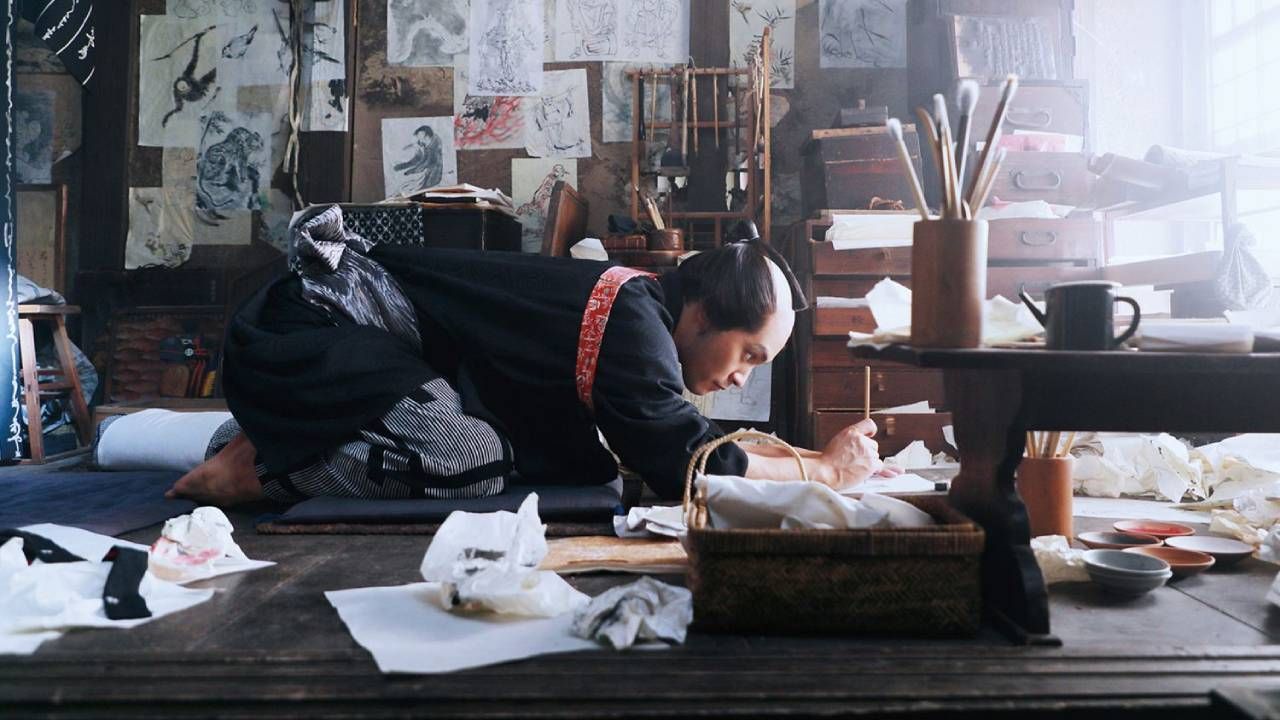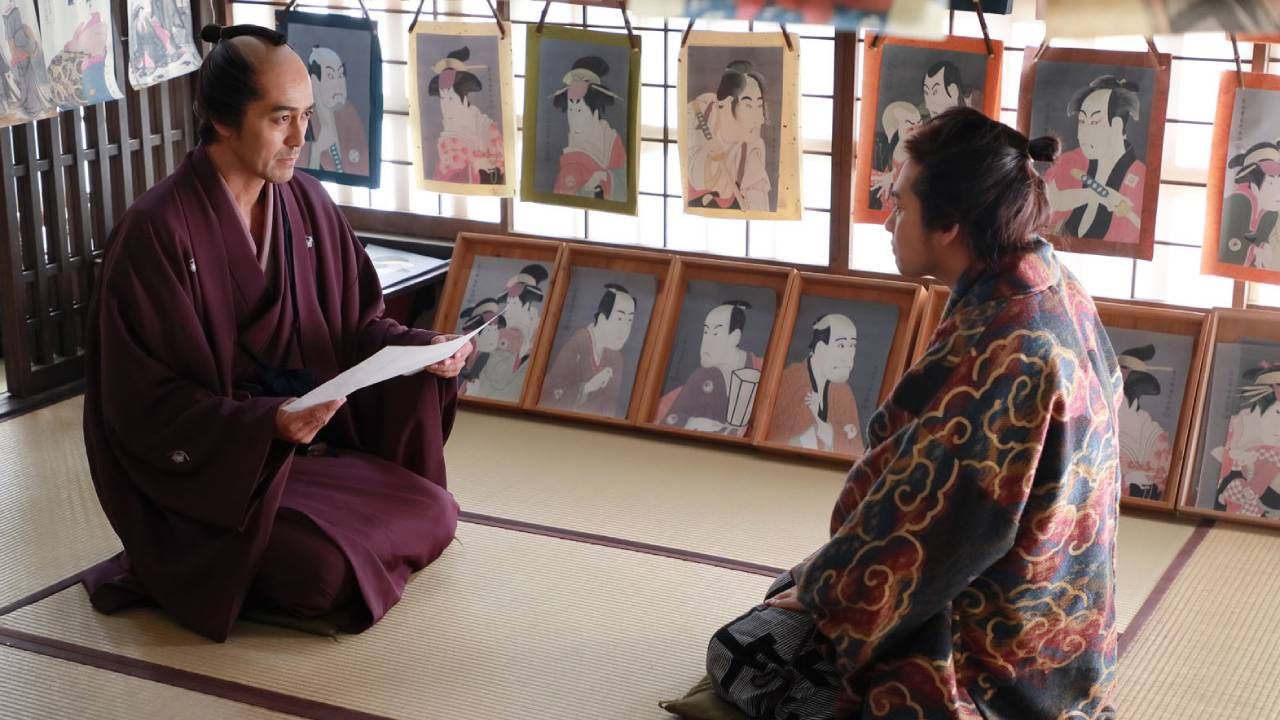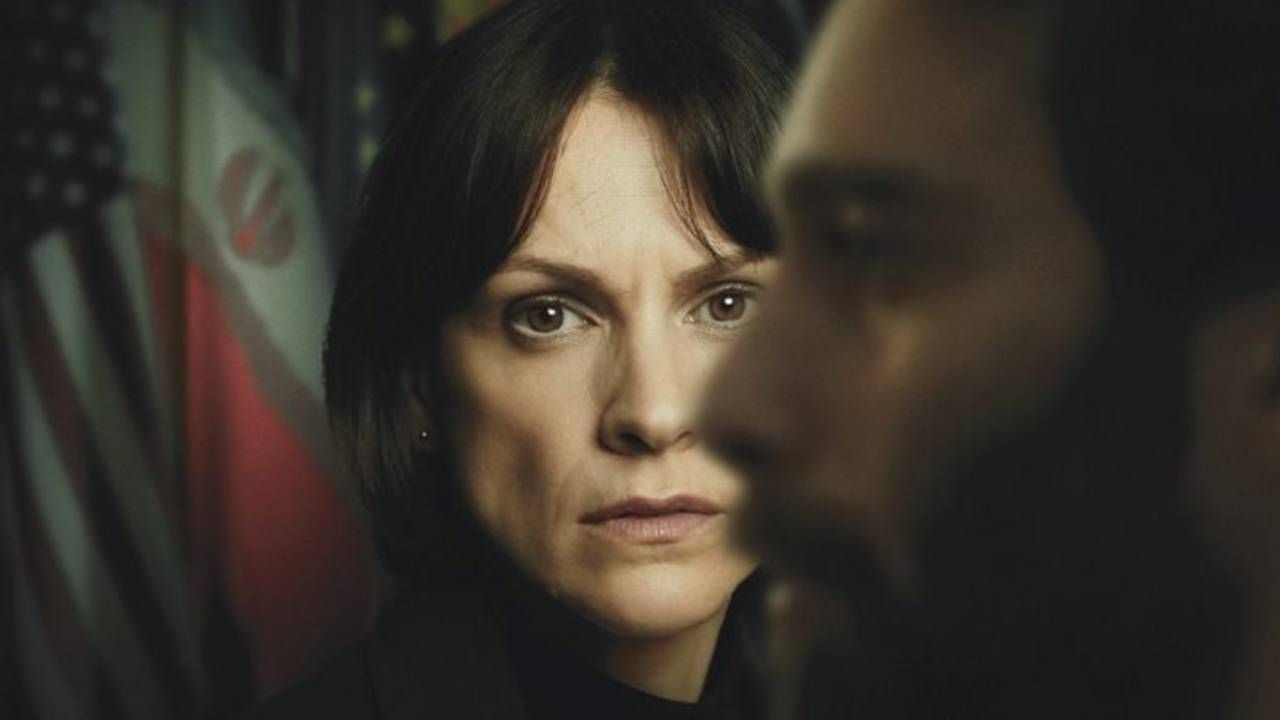What is it about? Japan, 18th century. While the imperial power imposes its censorship on artists, young Shunro, an apprentice artist, is expelled from school due to his impulsive temper and the unconventional style of his paintings. No one could have imagined then that he would become Hokusai, the famous author of The Great Wave off Kanagawa.
A legendary artist
Katsushika Hokusai was born in 1760 in the popular area of Edo – formerly known as Tokyo – and showed a penchant for drawing very early. After attending several schools, he published his first collections and at the end of the 19th century took the name Hokusai (literally “workshop of the north” in honor of the pole star, which represents the Buddhist deity Myoken). In 1814, he published the first of 15 volumes of “Hokusai Manga”, collections of drawings on various subjects (fauna, flora, courtesans, merchants, war scenes…), which today represent a valuable testimony of life in the Edo period.
In 1830, at the age of 70, he published his masterpiece Thirty-six views of Mount FujiA series of landscape prints born from his many trips to Japan and in which we find the most emblematic of his works, The Great Wave off Kanagawa. Financial difficulties and the fire that destroyed his studio in 1839 did not destroy his obsession with painting: a true hard worker, Hokusai died at the age of 89, leaving behind more than 30,000 paintings.
The Great Wave off Kanagawa
Hokusai’s most famous work, The Great Wave off Kanagawa, is also a flagship work of ukiyo-e (meaning “images of the ephemeral and floating world”), an artistic movement associated with woodcuts. It was produced in many copies, the exact number of which is unknown. It is part of a series of forty-six representations of Mount Fuji (paradoxically called Thirty-six views of Mount Fuji). Firmly embedded in the collective imagination and pop culture as one of the most visible symbols of Japanese culture, it represents Hokusai’s unique style and his contribution to Japanese and European art.

How to catch such a famous artist?
The director did not want to present Hokusai as a person above ordinary mortals, but to show him as a normal person: “I would like to avoid making a biopic of this extraordinary man at all costs. He was a remarkable man, but he was not unattainable, he needed hard work and difficulties. I took the liberty of portraying this jealousy and competitive spirit. It could have been the driving force behind his creativity.”
Capture the scenes of the painting
“The traditional Japanese painting process doesn’t involve a lot of movement. Instead of directing the scene to make it impressive, I tried to show the individuality of each artist in the way they hold their brushes, for example.”– says Hajime Hashimoto. The film was supervised by Daisuke Mukai, of Tokyo University of the Arts, who showed the actors how to hold the brush and who, while inspecting the various works, was responsible for spotting any possible inconsistencies or lack of naturalness in the film. .

For the printing scenes, the team called in modern craftsmen who were photographed at every stage. The director recalls: “I was impressed to see that ancient printmaking techniques have been faithfully reproduced to this day, and that prints made in the Edo period can be used in a film.”
A precocious actor
The young Hokusai is played by Yuya Yagira, who in 2004, at just 14 years old, won the best actor prize at the Cannes Film Festival for Hirokazu Kore-eda’s No One Knows. Since then, we’ve been able to see him in Destruction Babies, Asakusa Kid, where he plays a young Takeshi Kitano, and the Gannibal series.
Source: Allocine
Rose James is a Gossipify movie and series reviewer known for her in-depth analysis and unique perspective on the latest releases. With a background in film studies, she provides engaging and informative reviews, and keeps readers up to date with industry trends and emerging talents.






